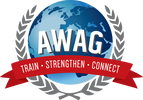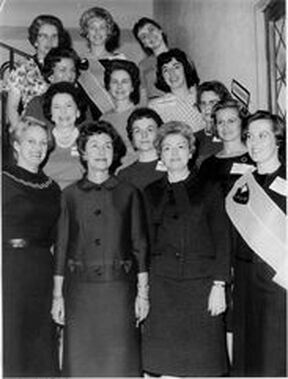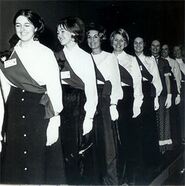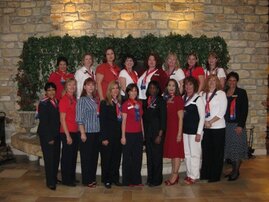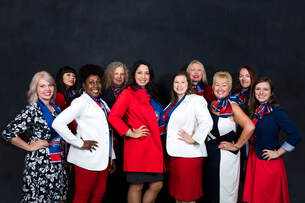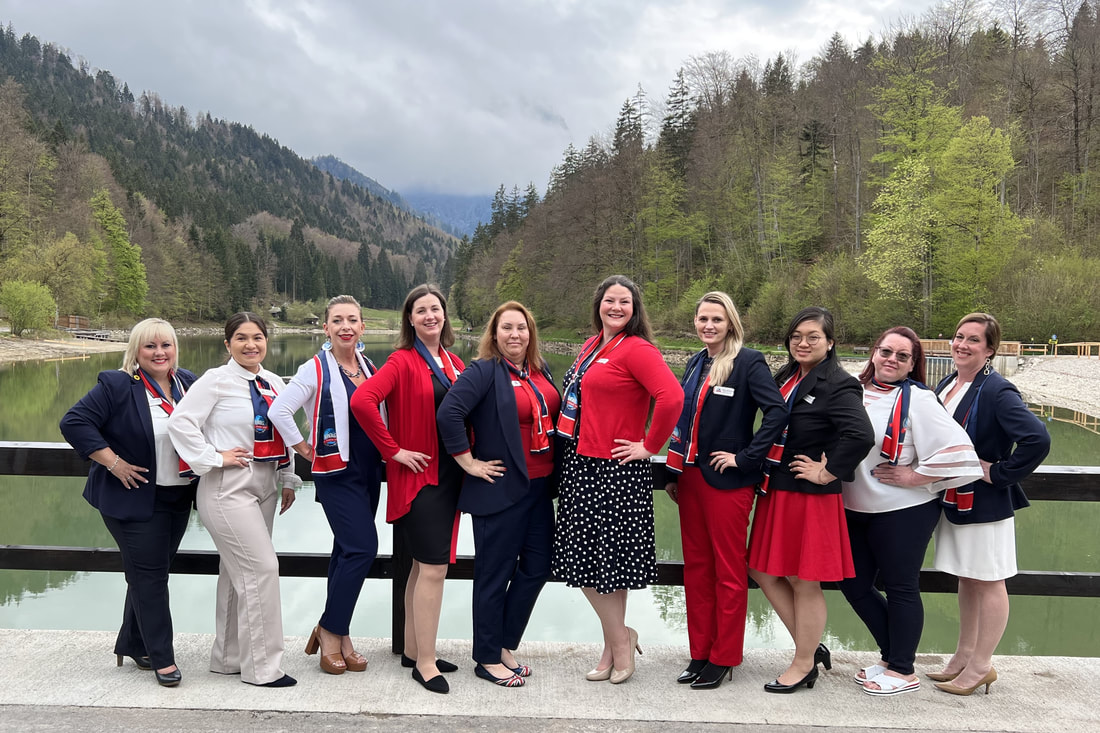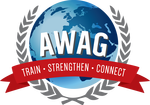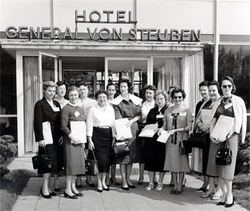
The origins of AWAG can be traced to the fall of 1946, when Mrs. Anthony Biddell, wife of the Commanding General of the US Army of Occupation, formed a committee of eight women to plan one of the largest welfare organizations ever set up by volunteers. This group, known as American Occupation Women’s Voluntary Service (AOWVS), helped to coordinate the distribution of relief aid sent by stateside clubs and church groups to post-war Germany.
In 1948, AOWVS added the additional purpose of assisting other welfare groups throughout Germany with suggestions and ideas. That same year, Chiemsee Rest Center hosted the first organized welfare conference. Delegates from Germany and Austria gathered to report on their welfare projects, discuss problems and ideas.
In 1948, AOWVS added the additional purpose of assisting other welfare groups throughout Germany with suggestions and ideas. That same year, Chiemsee Rest Center hosted the first organized welfare conference. Delegates from Germany and Austria gathered to report on their welfare projects, discuss problems and ideas.
|
An advisory board was formed in October of 1948 with the purpose of administering future welfare conferences. This board was composed of seven area representatives, one from each of the seven geographical areas: Bremerhaven (including Berlin), Frankfurt, Heidelberg, Stuttgart, Nuremberg, Munich, and Vienna. The biannual meeting was known as the Women’s Zonal Welfare Conference.
At the May 1950 conference, the organization’s purpose changed from welfare and charity to one that emphasized German-American relations and included general club activities. Another significant change was the elimination of oral and written welfare reports, in favor of workshops and discussion groups where delegates could attend sessions concerning local issues and activities. From 1950 until 1954, clubs in France, the United Kingdom, and Italy were invited to participate in these conferences. The International Conference of American Women’s Activities met annually until 1964 and eventually included representatives from Spain, Portugal, the Azores, and the countries of the Near and Middle East. However, the financial cost to send delegates to the Berchtesgaden conference, as well as the time and distances involved prevented many organizations from participating. |
|
In the spring of 1954, club members in France held a conference of American Women’s Activities in France. The organizers presented much the same type of working conference as the parent one in Germany, but focused on issues and ideas specific to their regional membership. By 1955 a similar conference was organized in London for clubs in the United Kingdom. In October of 1956, a small group was selected to plan and administer a German regional conference and AWAG was formed. The first Annual Conference of American Women’s Activities, Germany, was held in 1957. By 1965 it had replaced the International Conference as a forum for volunteers with common goals and interests.
|
|
Through the 1960s and 1970s, AWAG grew to thirteen geographic areas encompassing all of (Western) Germany. The Annual Conference brought hundreds of delegates together to share ideas and learn skills that they could take back to their clubs and communities. An AWAG logo was designed to symbolize the structure and purpose of the organization. AWAG edited and published the first edition of Never a Dull Moment, a travel and shopping guide written by spouses stationed in Germany.
As the American military presence in Germany was reduced, AWAG also reorganized into seven geographic areas by 2001: Hessen, Rheinland-Pfalz, Oberpfalz (including Berlin), Eifel (including Belgium, Netherlands and England), Rhein-Neckar, Schwaben (including Italy), and Franken. Speaker Chairperson and Corporate Liaison became appointed Board positions in order to better utilize talents and resources. |
|
In 2004, a Web Page/Technical Support position was created to address the modern requirements of our organization. In 2005, the Auslander area was created to cover Belgium, Netherlands and England, replacing the Eifel area. The Rheinland-Pfalz area also gained several additional installations previously located in the Eifel area. In 2007, Italy became an area with an Area Representative. By 2010, the BOG voted to place a second temporary Area Rep in Italy dividing the area into Italy North and Italy South. The Rhein-Neckar area closed in 2013 when United States Army Europe (USAEUR) Headquarters moved to Wiesbaden, Germany.
|
The Area Representatives remain the point of contact for their local volunteer organizations and clubs, and are responsible for coordinating a one-day conference for community members within their geographic areas. The demographics of the military spouse continue to change and become more connected with the onslaught of social media and AWAG does the same. In 2008, AWAG developed a Facebook page.
|
Through the years, many of supporting spouse club organizations changed their names to eliminate boundaries and in 2011 a committee headed by Mrs. Joyce Ward developed a new name to match our already famous acronym, AWAG. American Women’s Activities, Germany officially became Americans Working Around the Globe. This exhibits a look to the future with opportunity of growth outside of Europe. Following the organization name change, the BOG began to call the conference a Leadership and Training Seminar. This reflected the times when budget cuts and sequestration eliminated funding for conferences. The four-day Annual Conference traditionally held in the spring, allows organizations to send their newly elected or appointed volunteer leaders. The working conference provides a framework to share ideas, lessons learned, and successes.
|
In 2000, a committee chaired by Brandie Sinkler developed a mission statement: AWAG exists to train, strengthen, and connect volunteers, their organizations, and their communities. In the summer of 2014, AWAG became a tax-exempt nonprofit organization with the status 501(c)3 due to its activities with educational purposes.
